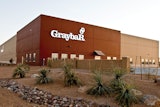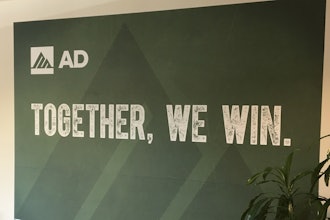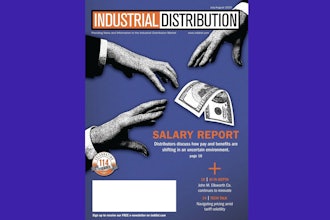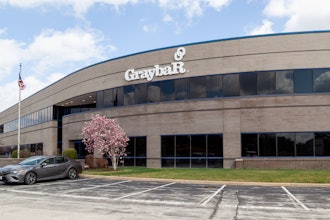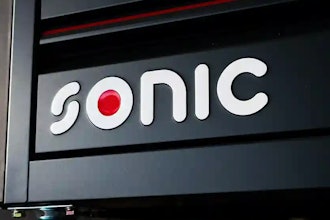
Companies face strategic and tactical challenges to their bottom lines. Two strategic challenges include the commoditization of products and the convergence of services.
Commoditization happens when buyers (and sellers) view what they buy (and sell) as commodities. In 1934, while studying bacteria on yeast cultures, a Russian biologist wrote, “Two species competing for the same resources cannot stably coexist. One will always have a slight advantage and out-compete the other. The second species will have two choices: go extinct or change the way it competes as to not directly compete for limited resources.” (G. F. Gause, The Struggle for Existence)
Even though Gause was writing about a biological phenomenon, he could have been writing about the state of business today. Commodities have no intrinsic value beyond their core properties. Buyers that view the products they purchase as commodities are price sensitive. This price sensitivity presses against your company’s bottom line.
You and your teammates can press back with your performance. Your performance is the best defense against commodity buying. Your personal value is the best antidote to those who perceive little value in your core product.
The second strategic challenge is the convergence of services. Everyone claims to offer good service. Does every company offer great service or is it a marketing illusion? Fifty years after Gause introduced the competitive exclusion principle, Michael Porter wrote about a similar phenomenon in business: “The convergence of services is subtle and insidious. The more benchmarking companies do, the more they start to look alike. As rivals imitate another’s improvements in quality and cycle times, strategies converge and competition becomes a series of races down identical paths which no one can win.” (Competitive Strategy, 1980)
Porter’s forecast that services would travel down the unwinnable path of commodity products has materialized.
Commoditization and the convergence of services make it difficult for your company to stand out. Our research shows that fewer than half of salespeople are able to articulate what makes their solution unique. Although products look similar and companies appear to be the same, there is one unique dimension that stands out: people. People represent the single unique dimension of value because there is no commodity in creativity, and there is no traffic jam on the extra mile. You are the one thing that makes your company stand out in the market. Here are two ideas to fully leverage this key differentiator.
Create Value Through Meaningful Work
People want more than money; they want meaning. Money is important, but it is not everything. People work for a blend of intrinsic and extrinsic motivators. Intrinsic motivators include things like satisfaction, pleasure and creative exploration. Extrinsic motivators include pay, benefits and working conditions. There is a baseline of extrinsic motivators that must be present in a job, but it is intrinsic motivators that cause people to wake up in the morning without an alarm clock. Meaningful work is intrinsically satisfying.
McKinsey & Company reported that employees ranked intrinsic job factors as more motivating than financial incentives. The number one reason people are dissatisfied is that they say their jobs are no longer interesting. They have lost their meaning. People want to do good work. No one wakes up in the morning and says, “I’m going to deliver mediocre results.” But what if we woke up in the morning and said, “I’m going to deliver meaningful results?” Imagine the impact this would have on your happiness.
Some people go to work to do tasks. Others go to their jobs and are fully engaged. They create their own form of art and find meaning in their toiling. These questions will challenge you to create value through meaningful work.
- How does my work positively impact the lives of others?
- How will I serve my team better?
- Do I feel responsible for my success? Do I own it?
- Do I respect my job, take pride in my work, and put my best work on display?
You Are in the Business of Serving People (Not Selling Product)
You are in the people business. Your work involves people serving other people. Selling and serving are relationship management. If you make the customer experience about people and relationships, the sale will not devolve into a simple and impersonal transaction. Personalizing it moves the sale out of the commodity realm. We have studied the effect of personal relationships on the success of top-achieving salespeople and purchasing agents. Top-achieving salespeople attribute 79 percent of their success to their relationships with customers. We followed up on this study by asking purchasing agents how much of their success they attributed to their personal relationships with salespeople. They attributed 58 percent of their success to these relationships.
The attitude of gratitude means that you view serving as a privilege, not a pain. The attitude of gratitude is the essential quality of those who serve. Some companies treat prospects better than they treat their customers. Treat your best customers as prospects, because they are. Your best customers are the competition’s best prospects. If you view serving as a pain, competitors will step forward and view serving your customers as a privilege.
Your attitude impacts how you serve customers. You affect customer satisfaction by the value you create for your customers. These questions will challenge you to serve more conscientiously.
- Do I view serving others as a privilege or a pain?
- Do I feel like the customer is vital to our company?
- Is our relationship with the customer win-win?
- Do I deliver proactive customer service?
- How do I create value for our customers?
In this challenging market, customers constantly ask, “What makes you different?” To answer these questions, sellers obsessively compare their solution to the competition. Every time you look to the competition, you limit yourself to the edge of their creativity. To Porter’s point, the more benchmarking we do, the more we look the same. Instead of looking to the competition, look to your people and tap into your own potential.
Paul Reilly is a speaker, sales trainer, author of Selling Through Tough Times (McGraw-Hill, 2021), coauthor of Value-Added Selling, fourth edition (McGraw-Hill, 2018), and host of The Q and A Sales Podcast. For additional information on Paul’s keynote presentations and seminars, call 636-778-0175 or email [email protected]. Visit www.TomReillyTraining.com and signup for their free newsletter.
